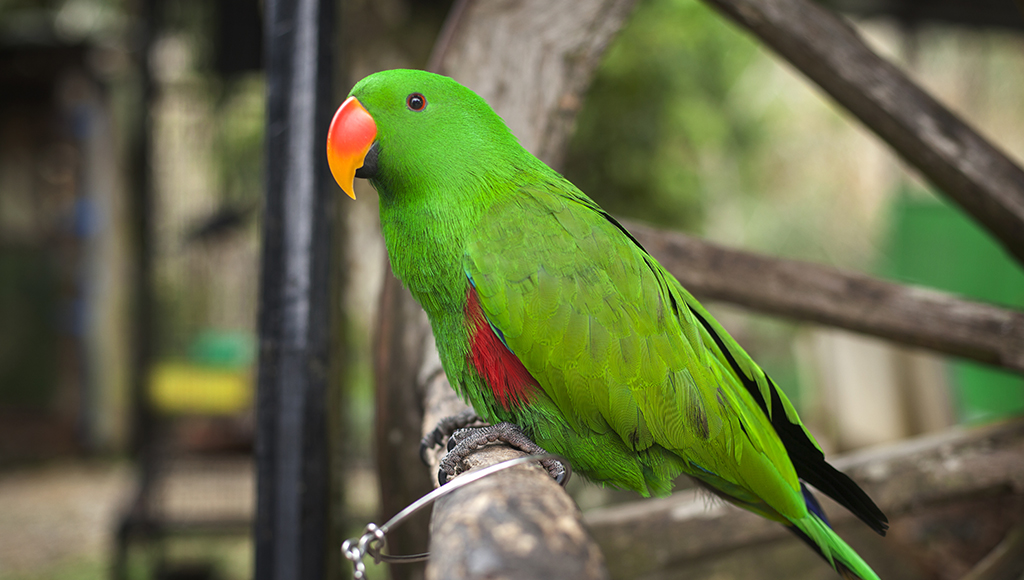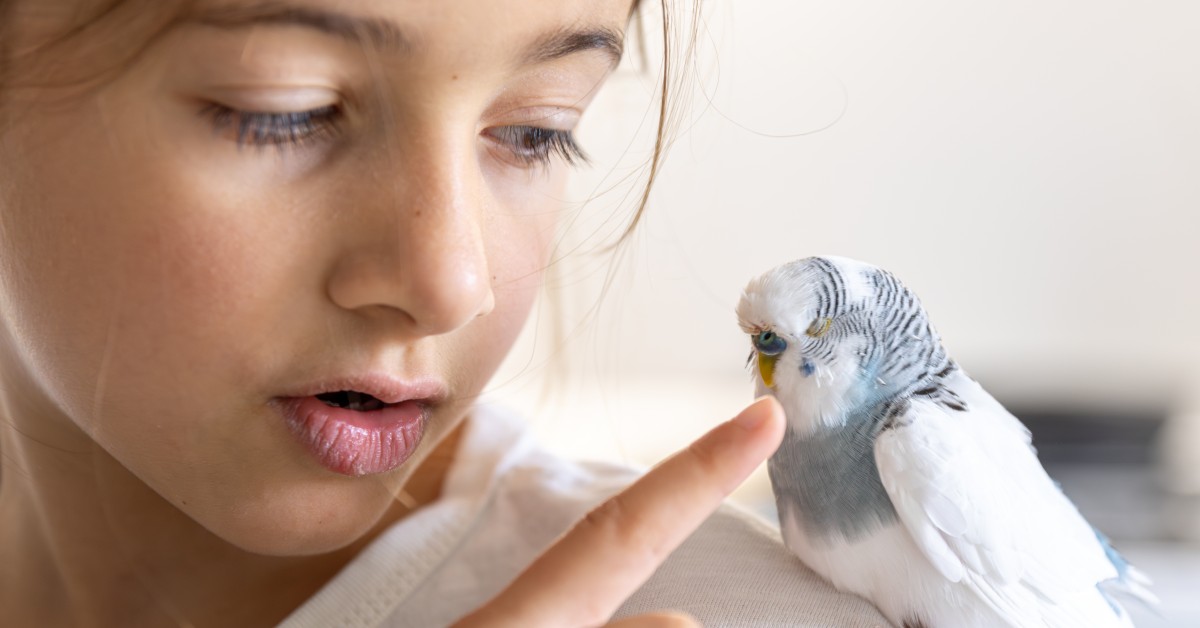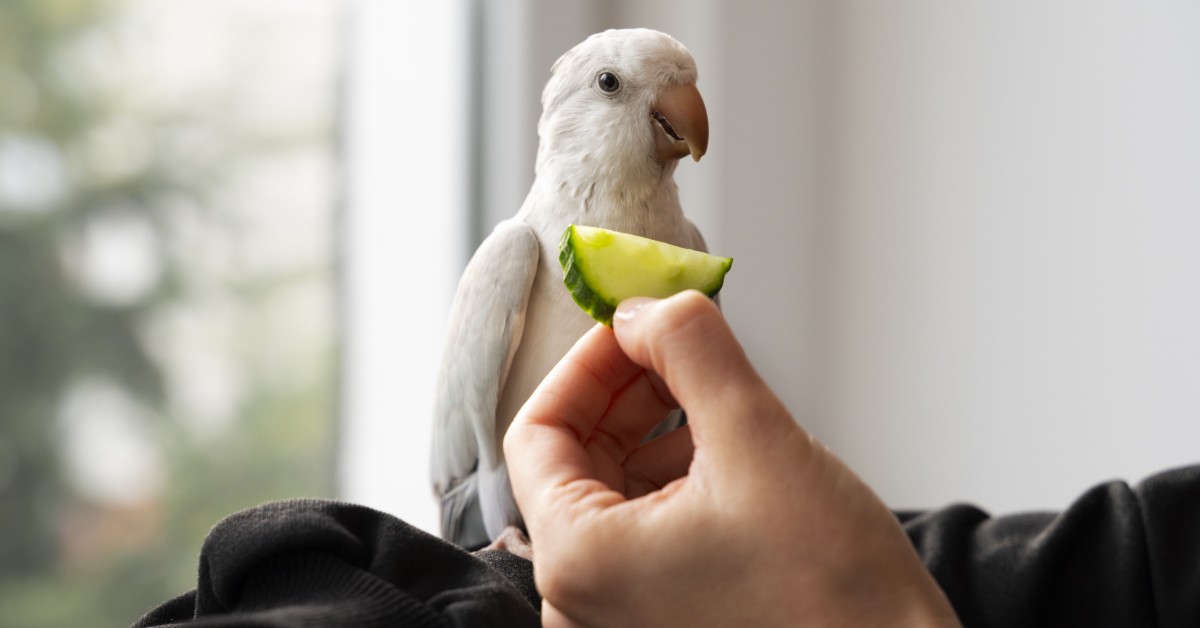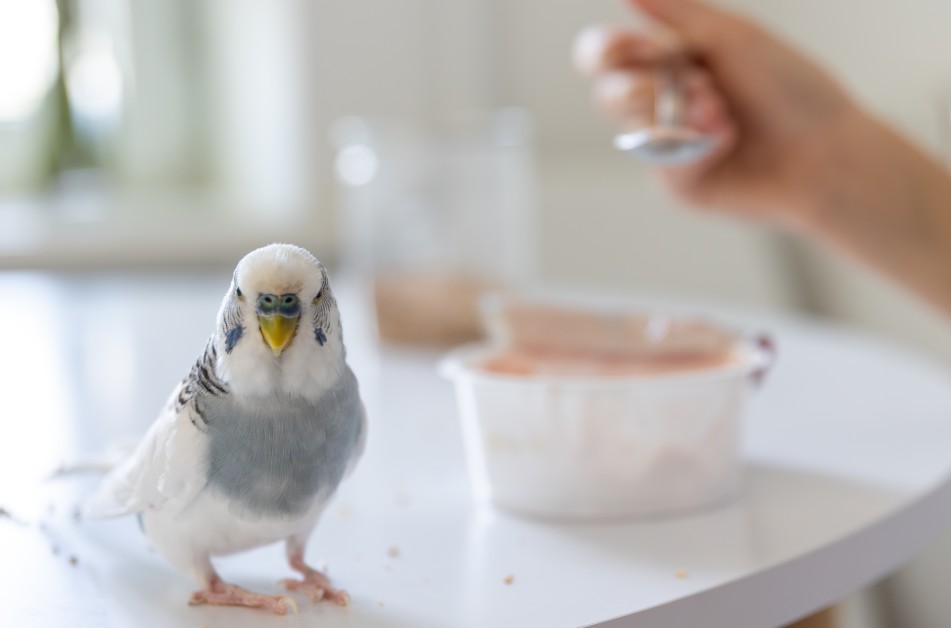Common Parrot Disorders
These conditions are caused by improper care, negligence, accidents or the environment.

This article describes some of the different injuries and accidents that may be faced in raising or keeping domestic birds, particularly parrots. Below you will find information about the various problems, the symptoms associated with the disorders and remedies for each.
It is crucial that you have an avian veterinarian to consult whenever a problem is suspected. Most often emergencies occur when there is no one available for help. In these cases, it may be necessary to take it upon yourself to do what needs to be done if it is a matter of life or death. This does not suggest that you should avoid veterinary medicine, on the contrary! There may be times when emergency situations arise and there is either no medical help available or not enough time to get medical help. This information may be helpful in such instances.
The following conditions are maladies that are classified as injuries because they are not caused by viruses or bacteria, and are therefore not an illness. These problems are caused by improper care, negligence, accidents, and/or the environment. Many of the described injuries are limited to babies still in the hand-feeding stage, but may still be encountered with older parrots.
Broken Blood Feather
This is probably one of the most common and easily fixed of all injuries. There is nothing special about a "blood feather". It is nothing more than a new developing feather that still has blood in the shaft. When a new feather is growing it has blood in it until it is fully developed. When the feather is fully grown, the blood recedes. If it should happen that an immature feather is broken, the shaft acts as a straw, and the blood flows freely. It is very difficult to stop the bleeding of a broken blood feather. The best remedy is to remove the feather by pulling it out. It should be held securely with tweezers or small (jeweler's) pliers and pulled straight out so the feather follicle is not damaged or torn. After a feather is pulled, growth of a new feather will usually be visible within two weeks.
When clipping a bird's wings, do not clip any feathers that are still enclose in a shaft, or have any visible blood in them. Wait until the new feathers are fully grown before clipping them.
Constricted Toe
Constricted toe, generally caused by low humidity in the brooder or nest box, is a condition that develops in very young parrot babies. The toes of a parrot are covered by layers of skin that look very similar to scales. Low humidity may cause a ring of this layer of the skin to dry out and begin to contract. As this layer of skin dries out, it cuts off the circulation of blood to the end of the toe. If the constriction is not removed, it will eventually cause the constricted part of the toe to dry up and fall off, resulting in a lame bird.
If constricted toe is recognized in its early stages, the ring of dry skin may be removed, and the toe will be saved. If the constriction has begun to cut into the toe, it should be removed by a qualified avian veterinarian. A removal attempt by an amateur may cause excessive bleeding and infection. If the constricting skin is visible, it may be softened with a quality skin cream and carefully removed. Removal of the constriction will save the toe.
If you are not sure of what you are doing, please have a avian veterinarian take care of the problem. If you are looking for a pet, do not be discouraged by part or all of a toe missing. Think of it as one less nail to clip.
Crop Burn
Crop burn is one of the most preventable of all of the maladies. It is caused by feeding food that is so hot it literally burns the inside of the crop. Crop burn is most easily recognized in babies that do not yet have their crops covered with feathers. A day or so after the incident, you will see a white patch through the skin of the crop. This is a blister that has been caused by the burn. If the food was hot enough, it can actually burn a hole through the crop and the outer layer of skin. Depending on the severity of the burn, digestion of food will become slow and infection can set in. A hole, burned through the crop, will have to be sutured.
Most often crop burn occurs when food has been warmed in a microwave oven, and was not checked for hot spots. Here again, using common sense will prevent this tragic accident from ever happening. When it is necessary to warm food for a baby parrot, you should always remember to stir it with your finger to check for hot spots. If it is too hot for your finger, it is certainly too hot for the baby. With this condition it is necessary to empty the crop of any undigested food, at least once every 24 hours, to prevent souring and bacterial infection until the crop is able to function properly.
If you suspect that your baby's crop has been burned, he should have immediate medical attention. Unattended, crop burn can and usually will be fatal.
Crop Punctures
Crop punctures are normally caused by either carelessness or inexperience in tube feeding (also known as Gavage Feeding). Tube feeding is a method of feeding in which the food is pumped into the crop through a tube that has been put down the esophagus and into the crop. If the tube is pushed too far, or if the baby jumps, the tube may be pushed through the crop membrane and the outer skin to cause a puncture. If this happens, food put into the crop will leak out of the puncture. The only way to correct this problem is to suture the inner and outer layers of the crop and skin. Antibiotics must be administered to prevent infection. If left uncorrected, infection will set in, and the baby will starve to death because the crop will no longer hold food.
Tube feeding should be used only as a last resort for babies that will not swallow food without choking and coughing. For this type of baby, this method of feeding will prevent aspiration, but obviously, it may cause other problems. Except in emergency situations, tube feeding should be done only by an experienced hand-feeder.
Dehydration
Dehydration can be found in any parrot species, of any age, and is caused by a variety of different conditions. It is recognize by a reddening of the skin and a loss of elasticity. Healthy skin is supple. When it is pushed together, or lightly pinched, and then released, it will almost immediately go back into place. Dehydrated skin will stay wrinkled in the pinched position.
In hand-feeding baby parrots, dehydration can be caused by not mixing enough water into the hand-feeding formula or by a bacterial infection that is slowing digestion. In parrots of all ages, this condition may be caused by a kidney infection or a bacteria that is causing a problem in digestion.
Although finding the cause of dehydration is of utmost importance, a primary concern should be to hydrate the bird until the cause can be determined and remedied. If your baby parrot is dehydrated, fluid is more crucial to his survival than food. Keep his feeding formula very fluid until you can see that his color is changing to a normal flesh color. If the formula is too thick, his system will absorb the fluid and leave most of the food in the crop to sour and cake. This will only complicate the already existing problem. The main concern is to hydrate the bird until the source of his problem can be determined.
Sour Crop and Slow Crop
These conditions will be observed only in a parrot baby that is still hand-feeding. Each may be the cause of the other. A baby's crop must empty completely at least once in a 24-hour period. If the crop is slow to empty, the soft food in the crop will begin to grow bacteria, and "sour". A sour crop will cause digestion to be slow, and, therefore, cause a slow crop. Although, a slow crop may be caused by a number of different problems, in every case, the condition will elevate bacterial growth, and possibly sour crop. If a baby's crop does not empty in a 24-hour period, it must be emptied in order to prevent further complications. This may be done with a piece of plastic tubing used for aquarium air line, or the baby may be held with his head lower than his body and the soured food massaged from the crop, through the esophagus, and out of the mouth. The latter method has a higher risk of aspirating the baby parrot if he breathes food into his lungs in his panic while being turned upside down, so use great caution when utilizing this method. The first method may be risky if the tubing is forced though the walls of the esophagus. If you have never emptied a baby's crop, it is best to contact an avian veterinarian or an experienced breeder to do this.
Stretched Crop
A stretched crop is a condition seen in hand-feeding baby parrots. It is caused by trying to give a baby too much food in one feed, and, thereby, overfilling and stretching the muscles of the crop. The crop skin and muscles have a natural elasticity that assist in the digestion of food and retain their shape as the food is digested. When empty, the crop should be flat. If the crop is overfilled to the point of stretching the skin and muscles, it will hang onto the breastbone, and a portion of the food will remain in the part of the crop that is overlapping onto the breastbone. It will appear very much like a deflated balloon. If left uncorrected, the food remaining in the crop will develop bacteria, which will slow the digestive process even more, causing weight loss and possibly eventual death.
If your baby's crop should become stretched, you can help correct the problem by making a "crop bra" for him. Depending on the size of the baby, it may be made with a wide gauze bandage, or a strip of towel or rag. The wide area in the middle should be long and wide enough to support his crop, the strips should be long enough too be fastened around him. The upper strips should be fastened, or tied, around the back of his neck, above his wings, and the lower strips should be under his wings and around his back.
The crop bra should remain on the baby until his crop muscles are strong enough to empty his crop. Until then, the crop should be emptied completely, and cleaned with warm water, every 24 hours.
Splay Leg
Splay leg is a condition that begins in very young babies that are not strong enough to hold their legs together on a slippery surface. It is generally caused by keeping the baby in a container that either does not have enough bedding, or, the surface under the bedding is so smooth that he cannot get his footing. His legs will spread out to the sides and very soon he will not be able to hold them under him at all. If this condition is not corrected at an early age, it may become permanent as he grows and the bones harden.
Splay leg is very easily corrected when it is recognized early enough. If the legs are secured under the baby at a distance apart that would be normal for him to stand, the problem can usually be remedied in less than a week. The correction time will depend on the severity and the age of the chick. It is also important to correct the conditions that caused the problem to prevent it from recurring.
Depending on the size of the baby, the legs may be held together with gauze tape, a strip of cloth or connected rings that his feet will fit through. Whatever you use, make sure that nothing is so tight on this legs that the circulation to his feet is cut off. If this happens, you may save his legs and lose his feet. Once his legs have become strong enough for him to support himself, and stay under him, the supports may be removed. If splay leg is not corrected, the baby's legs will grow out to the sides, and he will never be able to stand normally on his own.
Slipped Tendon
This problem most often develops in very young babies that are still growing and developing. The tendon that normally fits into the groove at the heal of the foot slips to the side of the heel. As the tendon contracts it will cause the foot to turn to the side and the toes to clench. It will look as though the baby is walking on the side of his foot.
At less than two weeks, it is possible to correct this problem by securing the baby's feet on a piece of tape, much like standing him on a mouse sticky trap. As he gets a little older, the tendon may be surgically pinned in the correct position until it enlarges the groove in the heal to retain placement on its own. If the condition is not recognized early enough in the babies development, the tendon may shorten so that the baby's foot is permanently turned to the side. If the condition is corrected, there will be no residual side effects, and no evidence that the problem ever existed.
Crooked or Scissor Beak
Scissor Beak is a condition in which the upper mandible is not straight and does not meet correctly over the lower mandible. There have been many theories as to the cause of this condition, such as improper incubation, improper feeding techniques, poor nutrition or heredity. It is very possible that it may be caused by any one or a combination of these factors. Feeding technique is blamed most often as the cause of this condition. Although feeding technique may, at times, be one of the causes, there are a number of other possible reasons for the condition. This condition may occur in young babies that tend to clamp the top mandible tightly over the lower mandible to one side or the other doing the chugging, feeding motion. This causes a groove to develop in the lower mandible that the upper mandible begins to rest in. In time, the upper mandible begins to curve to one side as it rests in this groove, and the lower mandible grows longer on the opposite side.
Regardless of the cause, or the age of the bird, this condition is generally correctable with persistent trimming of the upper and lower mandibles and the cleft that the upper mandible rests in, located on the under side of the upper mandible. Your avian veterinarian will be able to analyze the condition and make recommendations for correcting it.
Since a bird's beak is constantly growing, persistent trimming will eventually result in both mandibles growing normally, and the condition corrected. To be sure that the correction is done properly, shaping and clipping of the beak should only be done by an avian veterinarian or someone that has had experience in this procedure. Incorrect trimming may worsen the condition.
Split Sternum
Split Sternum is a term used to describe the splitting of the skin on the breast by the breastbone. This injury is normally caused when a parrot falls from a t-stand or cage to a hard floor, such as ceramic tile. A clipped parrot, especially one that has been improperly clipped, cannot break a fall with lift from his wings. If he falls from the height of a cage top or a t-stand to a hard floor, and hits his breastbone, it may sever the skin on his chest causing it to spit open. If this happens, the skin on the bird's chest must be sutured. He should be immediately taken to an avian veterinarian. To prevent this injury, never allow a clipped, or very young parrot to be on a cage top or t-stand that is on a hard surfaced floor.
Ready to start saving money on pet wellness care?
Then take a look at Mint Wellness, the pet wellness plan that provides fast reimbursement on routine pet care. Save on vaccinations, wellness exams, preventatives, dental, and more!
Learn More


